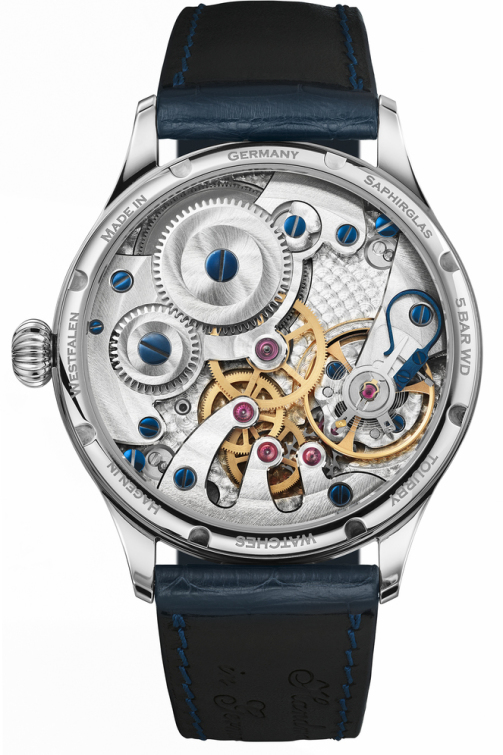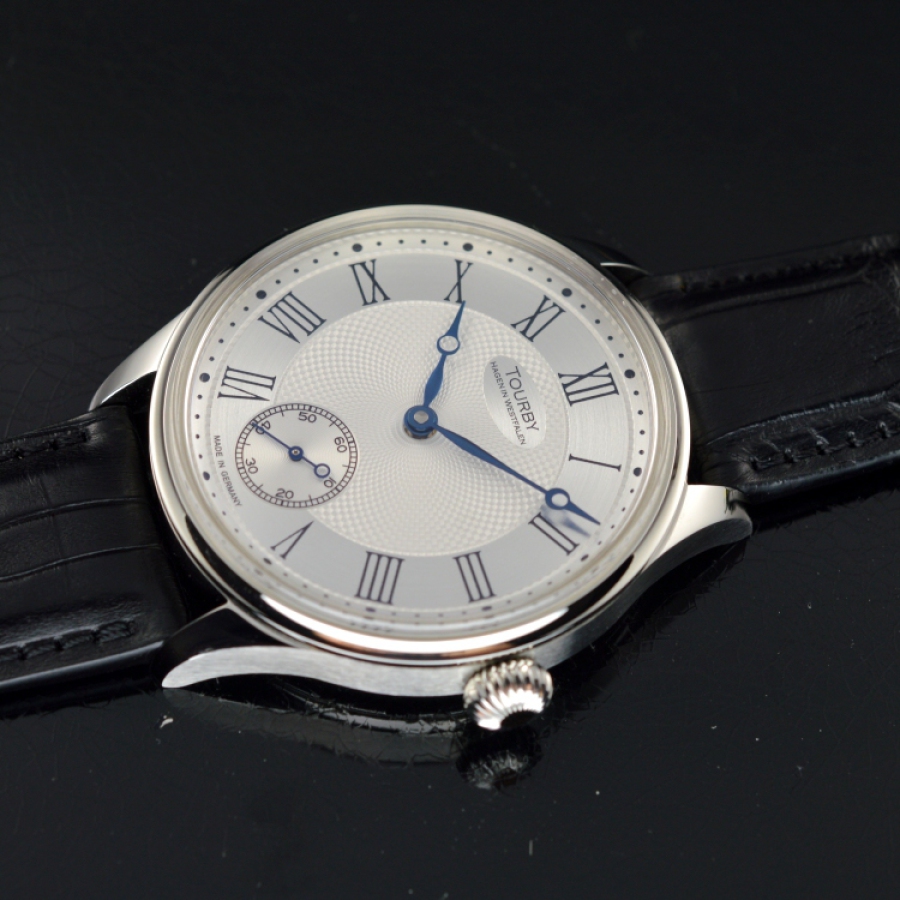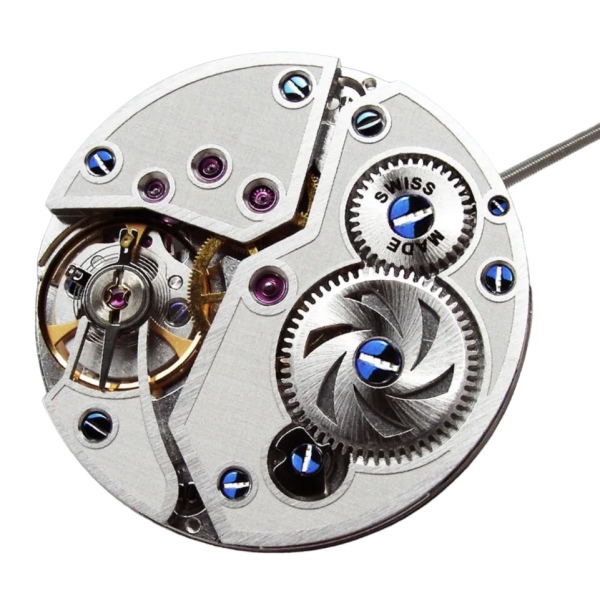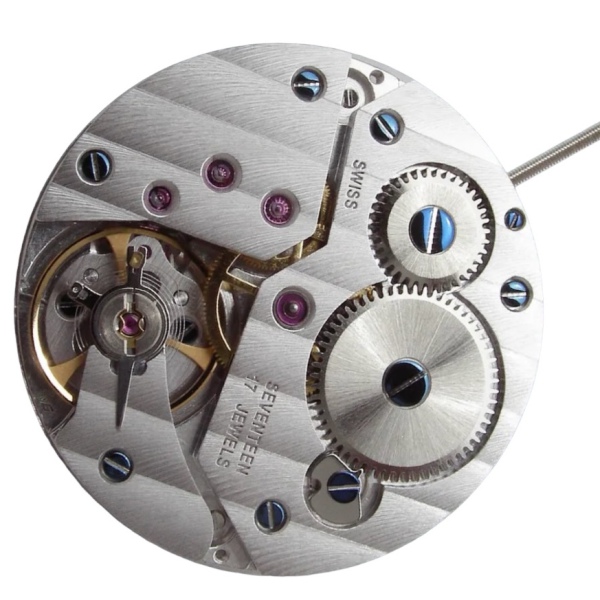The front
The art of guilloché, named after the Frenchman Guillot, is one of the greatest moments in watchmaking. Invented in the 16th century, the craft was further developed by guilloché machines in the 17th century. With guilloché, the dial or movement is clamped and a pattern is engraved using the guilloché machine. The guilloché machine is operated like a lathe and the pattern is applied in the form of a snail. The watchmaker has to be very careful so that the pattern can be applied to the material down to the smallest detail. Depending on how the guilloché machine is constructed and operated, different patterns can be produced. They were made famous by Abraham Louis Breguet, purveyor to the French court at the time, who built his pocket watches exclusively with engine-turned dials and blued steel hands in the middle of the 18th century. Since 1900, however, the craft of guilloching has almost died out. To evoke the tradition of guilloché, Tourby offers the “guilloché” models. However, the patterns are engraved onto the 925/000 sterling silver dial using state-of-the-art CNC milling machines. The dials are available with either Roman or Arabic numerals. Matching the dial, all models have temperature-blued "Breguet" steel hands based on 250 years of tradition and form.












